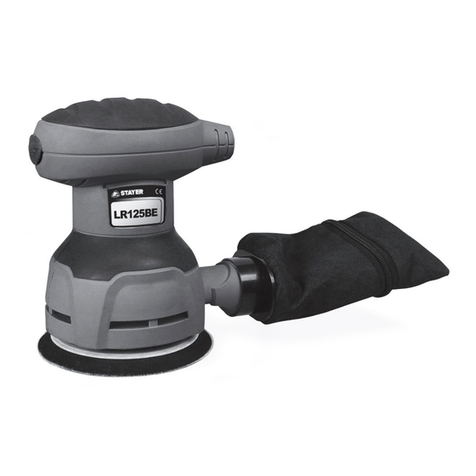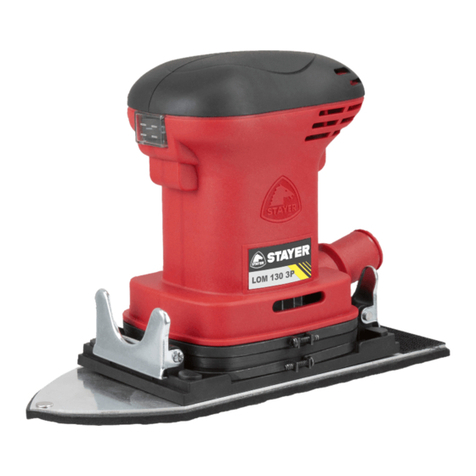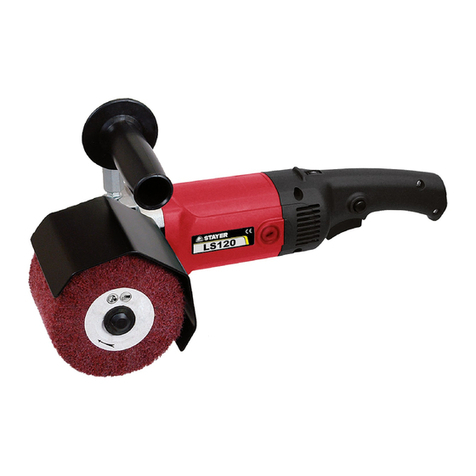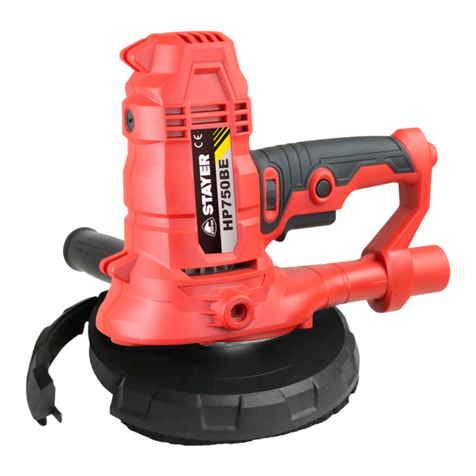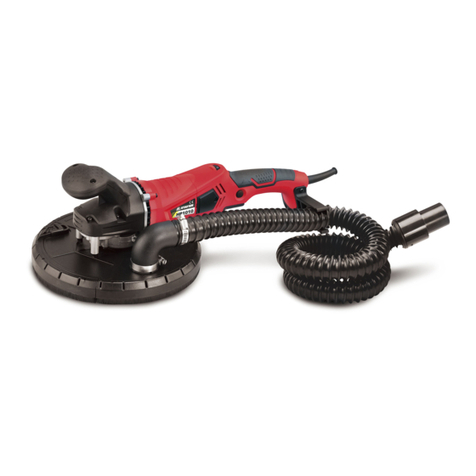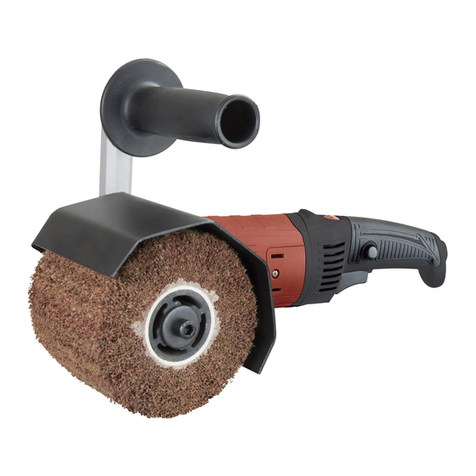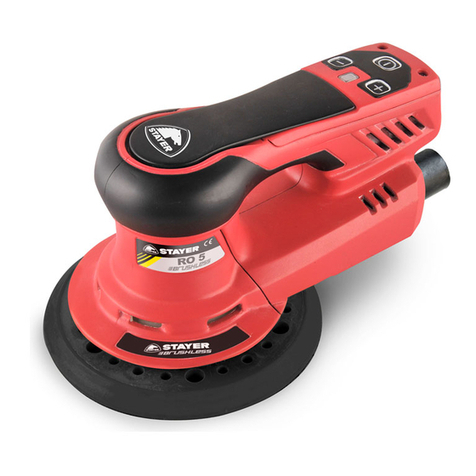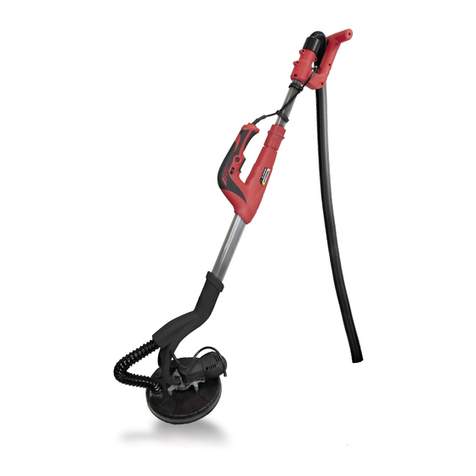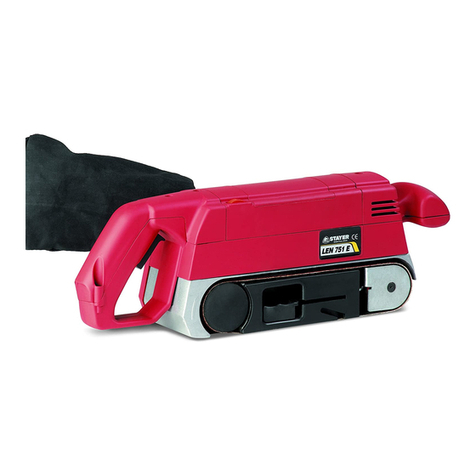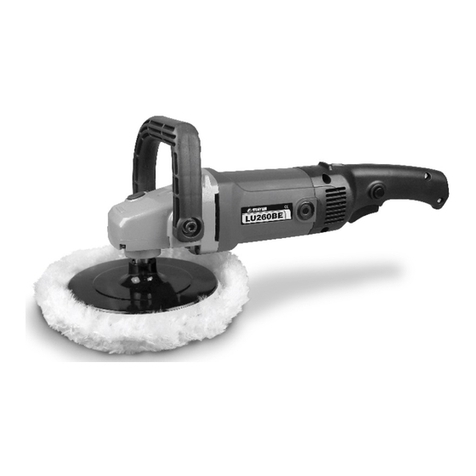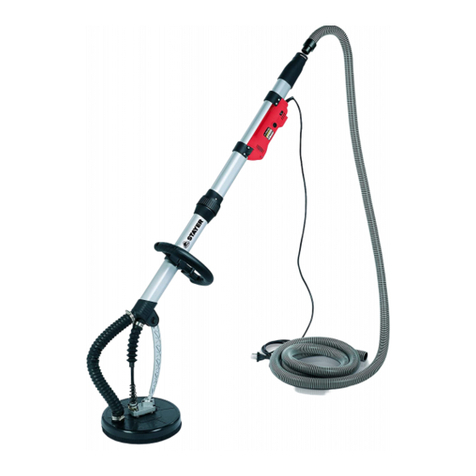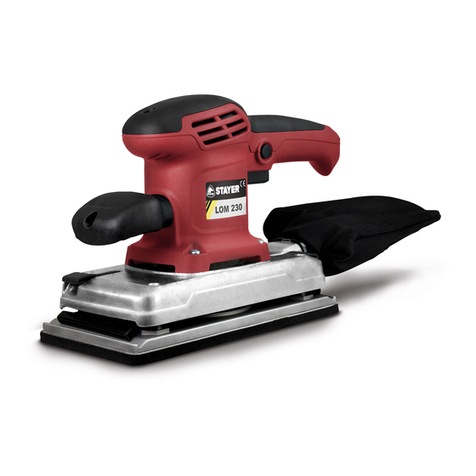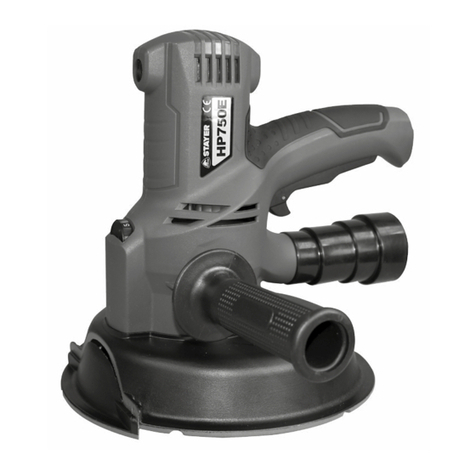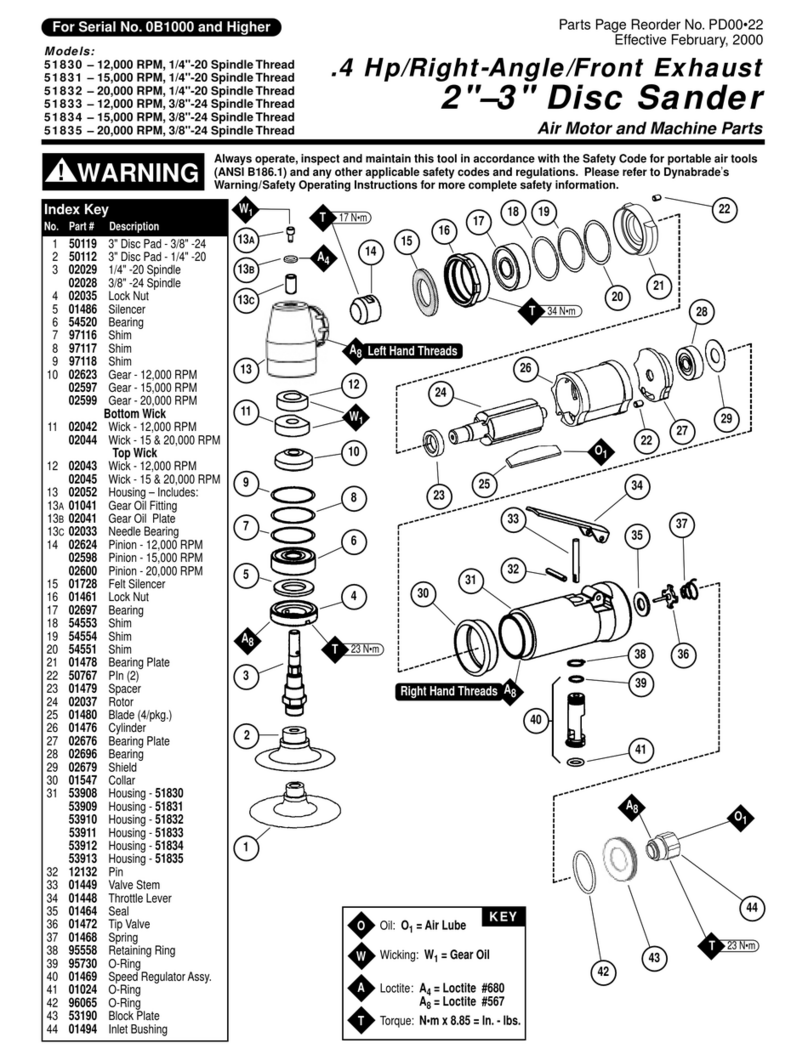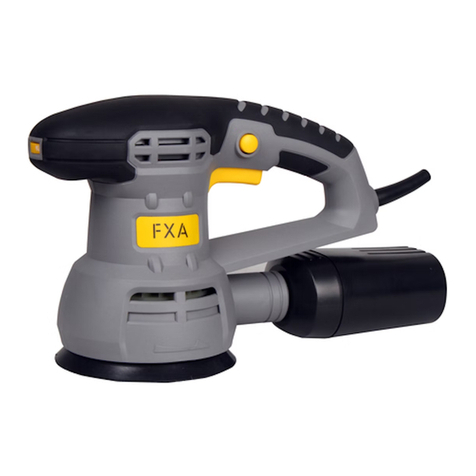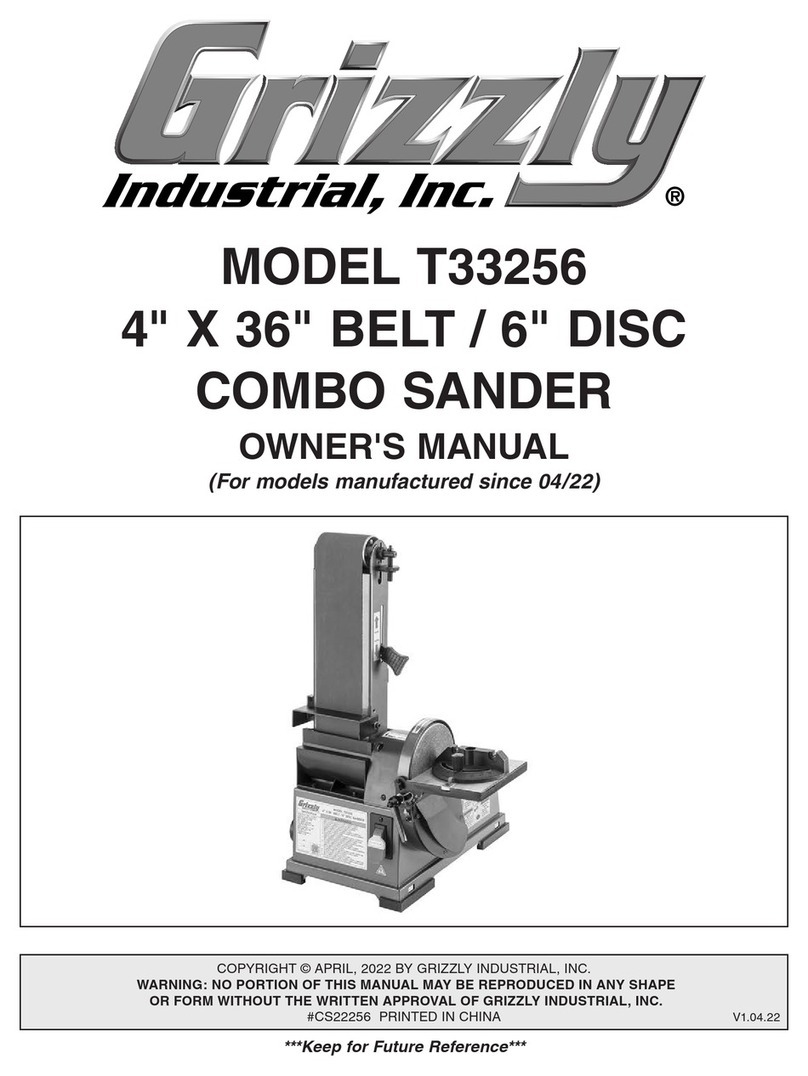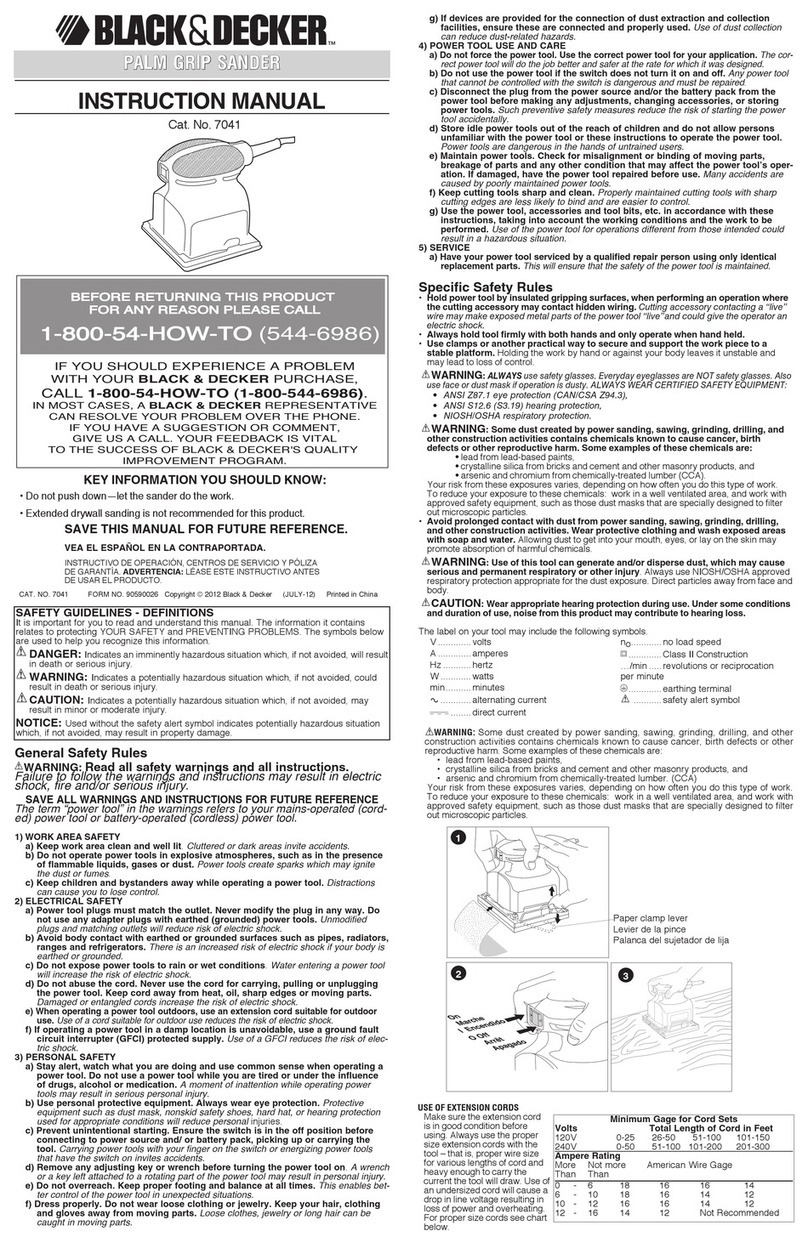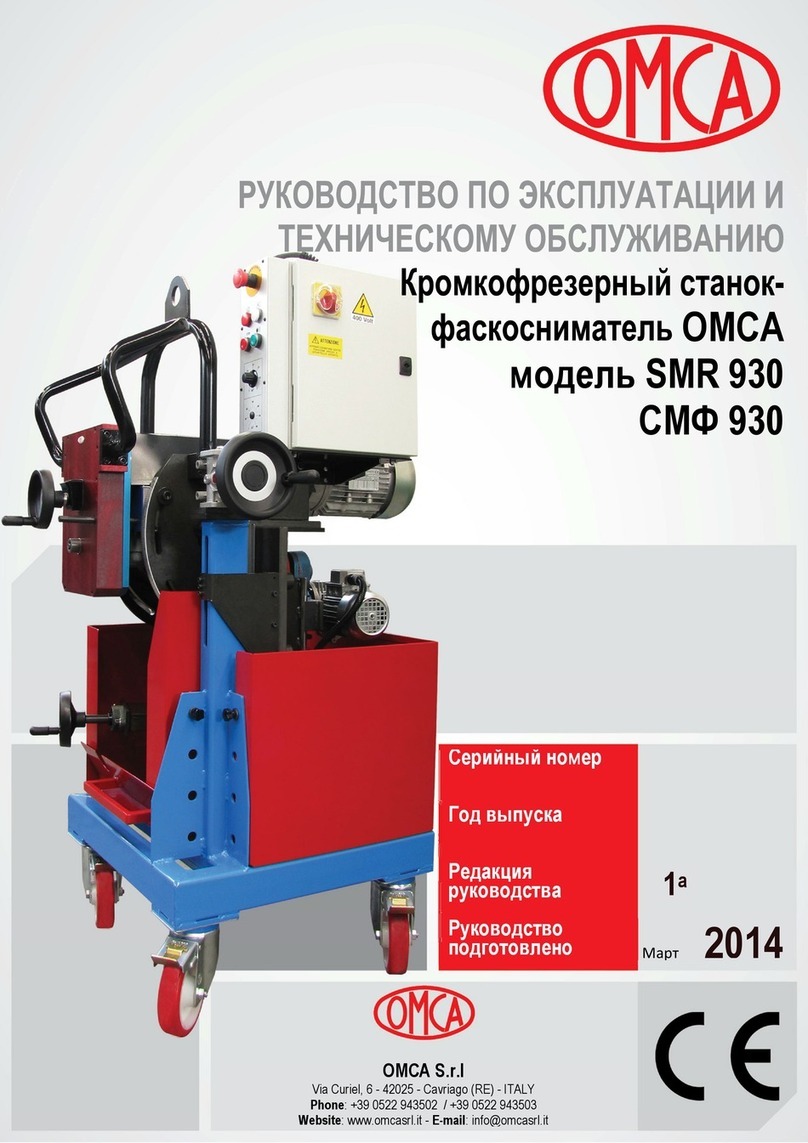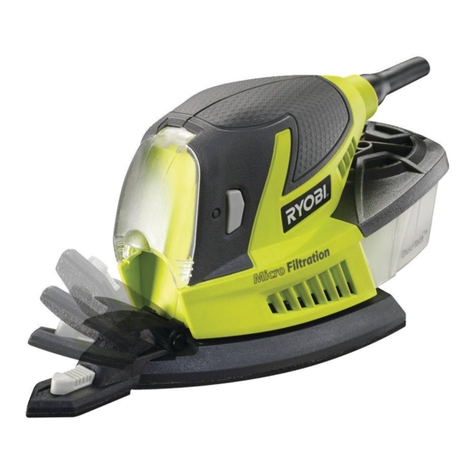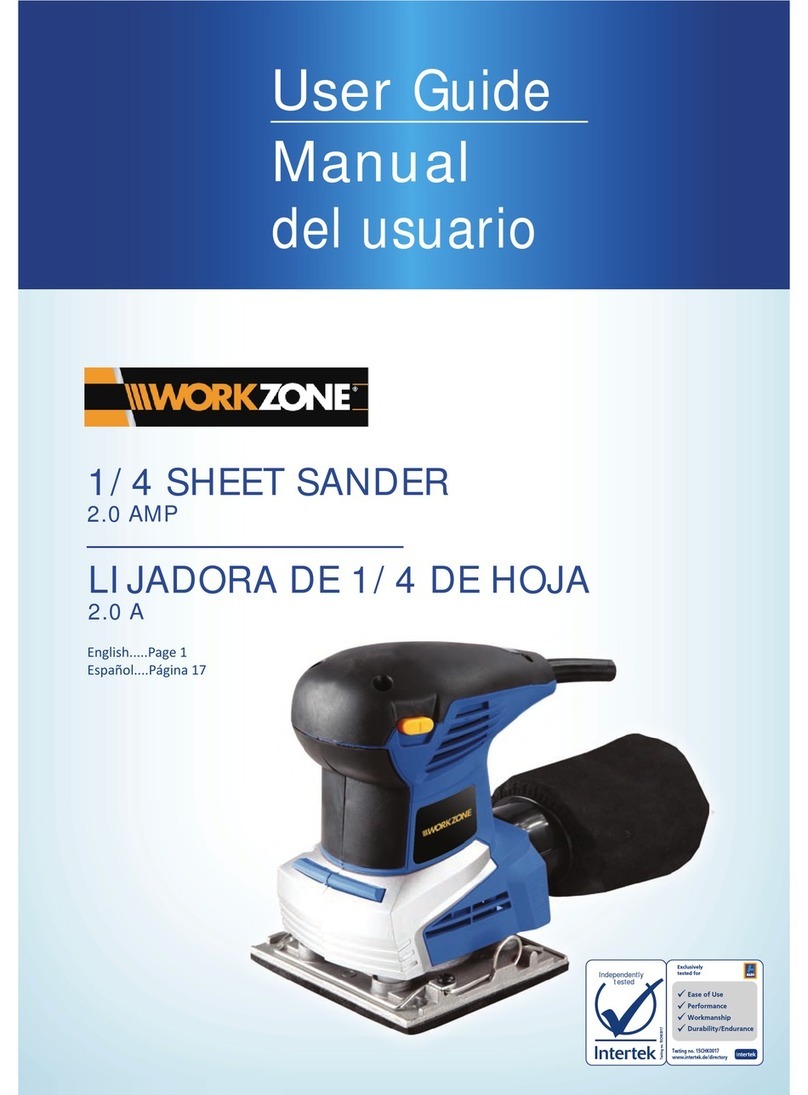
Attenzione! Per motivi di salute è assolutamente
necessariousareilsacchettoperraccoltapolvere.
Descrizionedell’apparecchio(Fig.1)
1. Impugnaturaanteriore
2. InterruttoreON/OFF
3. Regolatoredelnumerodigiri
4. Pulsantedibloccaggio
5. Impugnatura
6. Saccodiraccoltadellapolvere
7. Piastradilevigatura
8. Dispositivodiserraggio
9. Presadiaspirazione
Ilposizionamentoetest
InterruttoreON/OFF(Fig.3)
Accensione:premetel’interruttore2
-
.
.
Fissaggiodeifogliabrasivi(Fig.4)
- Staccatelaspinadallapresadicorrente.
- Inserite il foglio abrasivo nel dispositivo di serraggio
apertoechiudetelo.
- Mettete il foglio sopra la piastra oscillantein modo teso
efissatelodinuovo.
- Fate attenzione che le forature corrispondano al disco
oscillante.
Esercizio continuo: fissate l’interruttore 2 con il pulsante di
bloccaggio4
Spegnimento: premete brevemente l’interruttore 2, Potete
prescegliere il numero dei giri girando líapposita vite
godronatasulpulsante2.
Cambioutensile
Spazzolealcarbone
In caso di uno sviluppo eccessivo di scintille fate
sostituirelespazzolealcarbonedaunelettricista.
Attenzione! Le spazzole al carbone devono essere
sostituitesolodaunelettricista
Pulizia, manutenzione e ordinazione dei pezzi di
ricambio
Prima di qualsiasi lavoro di pulizia staccate la spina dalla
presadicorrente.
Pulizia
- Tenete il più possibile i dispositivi di protezione, le
fessure di aerazione e la carcassa del motore liberi da
polvereesporco.Strofinatel’apparecchioconunpanno
pulito o soffiatelo con l’aria compressa a pressione
bassa
- Consigliamo di pulire l’apparecchio subito dopo averlo
usato.
- Pulite l’apparecchio regolarmente con un panno
asciutto ed un po’ di sapone. Non usate detergenti o
solventiperchéquestiultimipotrebberodanneggiare le
partiinplasticadell’apparecchio.
L'elettroutensile è adatto per la levigatura e la lucidatura a
secco di superfici in legno, di materie plastiche, di metallo,
di superfici stuccate e superfici verniciate. Lo stesso è
adatto in modo particolare per profili, angoli o punti
difficilmenteaccessibili.
Istruzionidisicurezzaspecificheperlamacchina
Ÿ
Ÿ
Ÿ
Ÿ
Ÿ
Utilizzare l’elettroutensile esclusivamente per
levigatura a secco. L’eventuale infiltrazione di acqua
in un elettroutensile va ad aumentare il rischio
d’insorgenzadiscosseelettriche.
Attenzione: Pericolo d’incendio! Evitare un
surriscaldamento del materiale in lavorazione e
della levigatrice. Prima di iniziare una pausa
svuotare sempre il contenitore per la polvere. La
polvere di abrasione nel sacchetto raccoglipolvere, nel
Microfilter, nel sacchetto raccoglipolvere in carta (o nel
sacchettoraccoglipolvereonelfiltrodell’aspirapolvere)
può prendere fuoco in caso di condizioni sfavorevoli
come la scia di scintille prodotta durante la levigatura
del metallo. Una situazione particolarmente pericolosa
si viene a creare quando la polvere di smerigliatura si
mischia con resti di vernice e poliuretano oppure con
altri materiali chimici ed il materiale in lavorazione si
riscalda troppo nel corso di una lavorazione di lunga
durata.
Assicurare il pezzo in lavorazione. Un pezzo in
lavorazione può essere bloccato con sicurezza in
posizione solo utilizzando un apposito dispositivo di
serraggiooppureuna morsa aviteenon tenendolo con
lasemplicemano.
Mantenerepulitalapropriazonadilavoro.Misceledi
materiali di diverso tipo possono risultare
particolarmentepericolose.Lapolveredimetallileggeri
puòessereinfiammabileedesplosiva.
Mai utilizzare l’elettroutensile con un cavo
danneggiato. Non toccare il cavo danneggiato ed
estrarre la spina di rete in caso che si dovesse
danneggiare il cavo mentre si lavora. Cavi
danneggiati aumentano il rischio di una scossa di
correnteelettrica.
Descrizionedelfunzionamento
Leggere tutte le avvertenze di pericolo e le
istruzionioperative. Incasodimancatorispetto
delle avvertenze di pericolo e delle istruzioni
operative si potrà creare il pericolo di scosse
elettriche,incendie/oincidentigravi.
Lerelativeavvertenzedisicurezzasitrovanonell’opuscolo
allegato.
Leggete attentamente le istruzioni per l’uso prima del
montaggioedellamessainesercizio.
Montaggio
Montaggiodelsacchettoperraccoltapolvere(Fig.2)
ITALIANO
5
5
